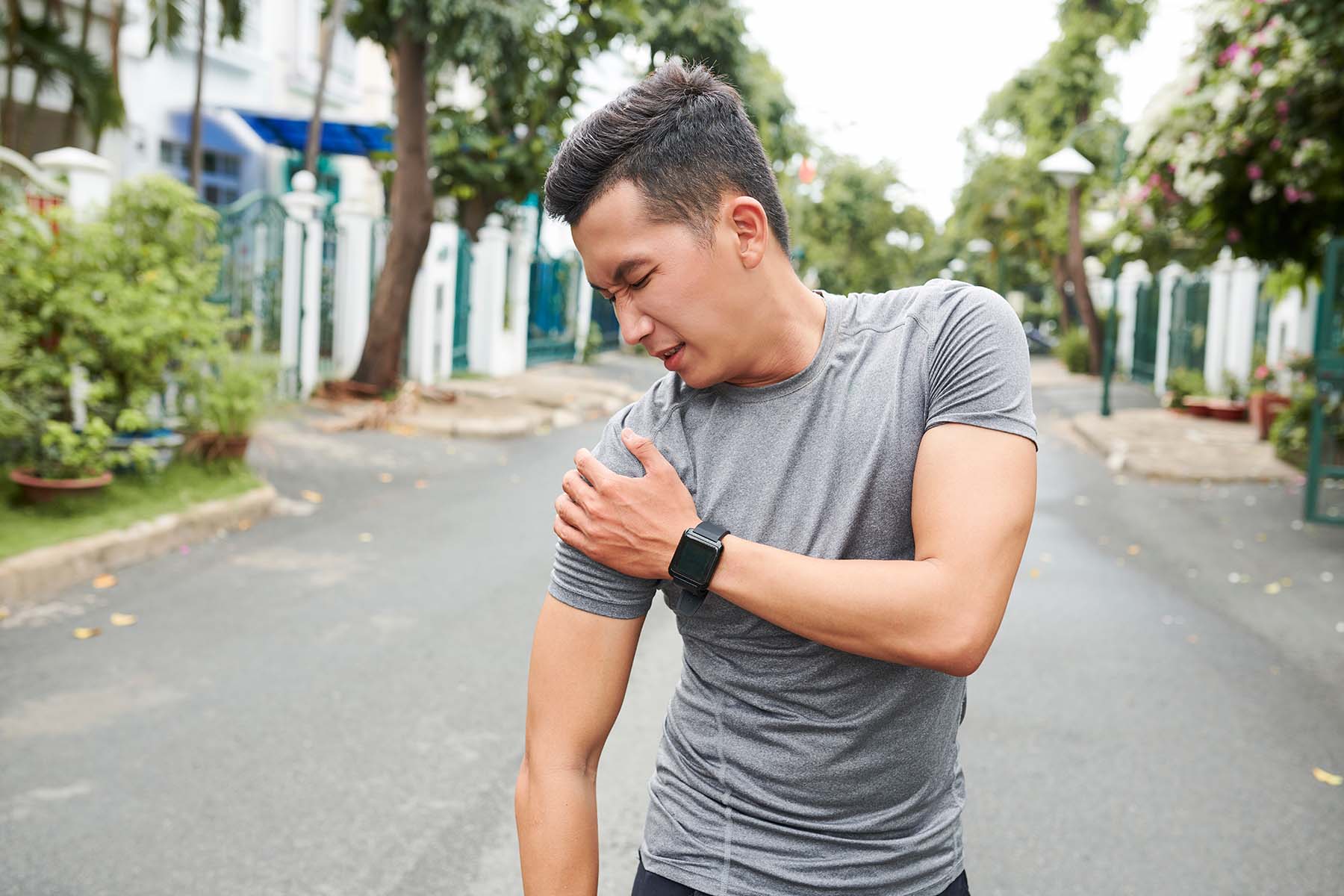A Dislocated Shoulder Needs More Than a Pop-Back-In

In Greek mythology, Atlas shouldered the burden of keeping the heavens aloft. Those ancient Greeks got it: the shoulder is one of the hardest working joints in the body.
“The shoulder moves more than any other joint; the soft tissues there are more prone to injury,” says Julianne Munoz, M.D., an orthopaedic surgeon and sports medicine specialist at the University of Miami Health System. With highly flexible anatomy, the shoulder can dislocate forward, backward, or downward. The upper arm bone can also pop partially or entirely out of the shoulder socket.
“A shoulder dislocation is as significant a trauma as a broken bone in the shoulder,” says Dr. Munoz.
Shoulder dislocations usually occur during a fall, accident, or impact that causes you to land on your outstretched arm in an awkward way. These injuries are more common in high-impact sports such as football, rugby, and basketball and also occur in martial arts.
Regardless of how you injure your shoulder, you will experience pain and possible swelling, and your shoulder will appear limp and/or significantly deformed and won’t move.
What you do next may determine your future mobility and function.
“This requires immediate medical attention in the ER,” says Dr. Munoz. “After an X-ray and physical examination to confirm dislocation, you’ll receive light sedation so that your shoulder can be manipulated back into place. This has to be done by someone who knows what they’re doing.”
If an untrained person attempts to pull, push, or yank your shoulder into place, they may break the humerus (the upper arm’s bone), creating an even more complicated injury.
A skilled, certified athletic trainer could manipulate the shoulder back into place on a young athlete, but the injured individual still needs to see an orthopedic surgeon.
Follow-up is key, says Dr. Munoz.
“A delay in (medical) management can put you back in the ER. You need a follow-up plan to ensure you recover appropriately. It’s always better to repair an injury earlier when we can.”
An orthopedic or sports medicine physician can evaluate the patient’s injuries and lifestyle to determine the best course of treatment. Physical therapy might be enough, or you may need surgery.
“I have a conversation with athletes. We will most likely need to stabilize the injured shoulder with surgery if they continue playing high-impact sports.
“Without surgery, people in their teens to 20s who play high-impact sports have more than a 90% redislocation risk. It depends on their plans – whether they have a college (sports) scholarship or plan to play professionally.”
Another option if an athlete wants to avoid surgery might be changing sports or the position they play.
Non-athletes might get by with physical therapy.
“People in their 40s to 50s have a lower risk of redislocation but a higher risk of a rotator cuff tendon tear which often requires a surgical discussion. With regard to redislocation, a person is never immune to reinjury,” says Dr. Munoz.
Your body, however, will benefit from therapeutic and strengthening exercises and learning proper ergonomics.
“A stronger, more coordinated shoulder is more likely to withstand a hit, fall, or awkward movement that could otherwise cause a redislocation,” says Dr. Munoz. Even if you’re not athletic, strength and coordination help you avoid shoulder injuries from overuse or falls.
To schedule a consultation with an orthopaedic expert at UHealth, call 305-689-5555.
Nancy Moreland is a regular contributor to UMiami Health News. She has written for several major health care systems and the CDC. Her writing also appears in the Chicago Tribune and U.S. News & World Report.
Tags: Dr. Juliane Munoz, musculoskeletal system, orthopedic surgeries, pain and swelling, shoulder joints, shoulder muscles
